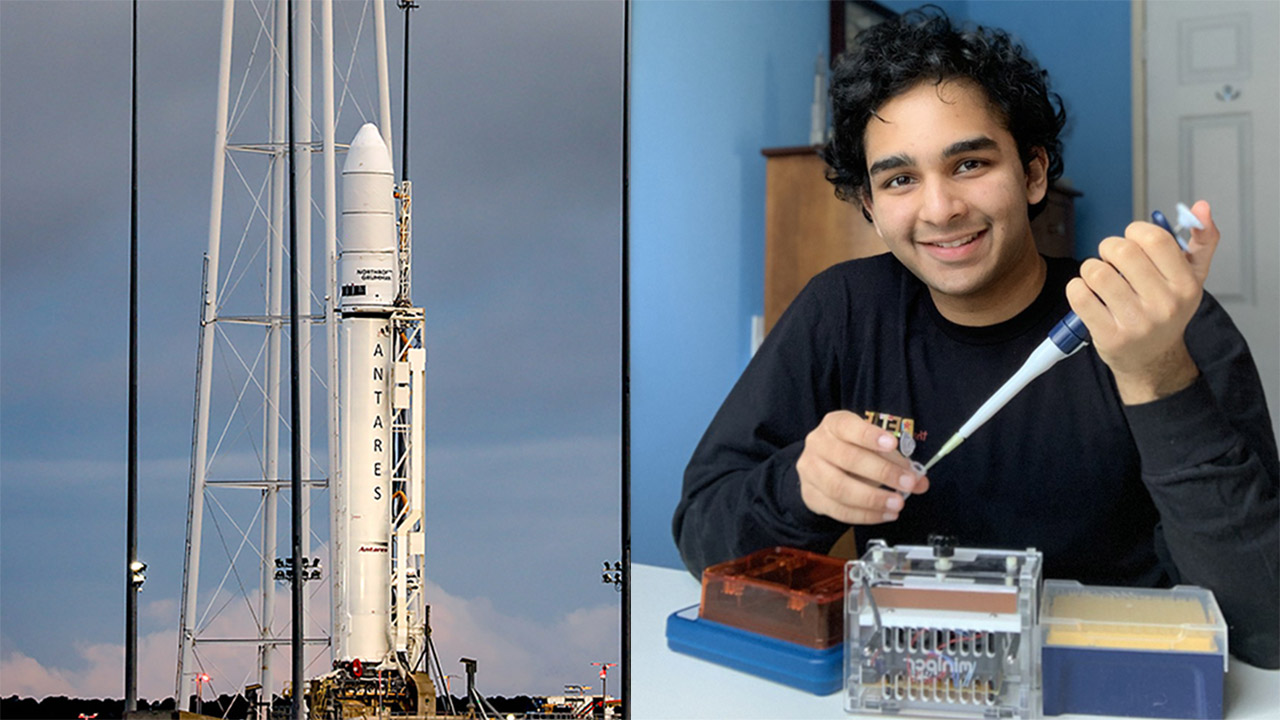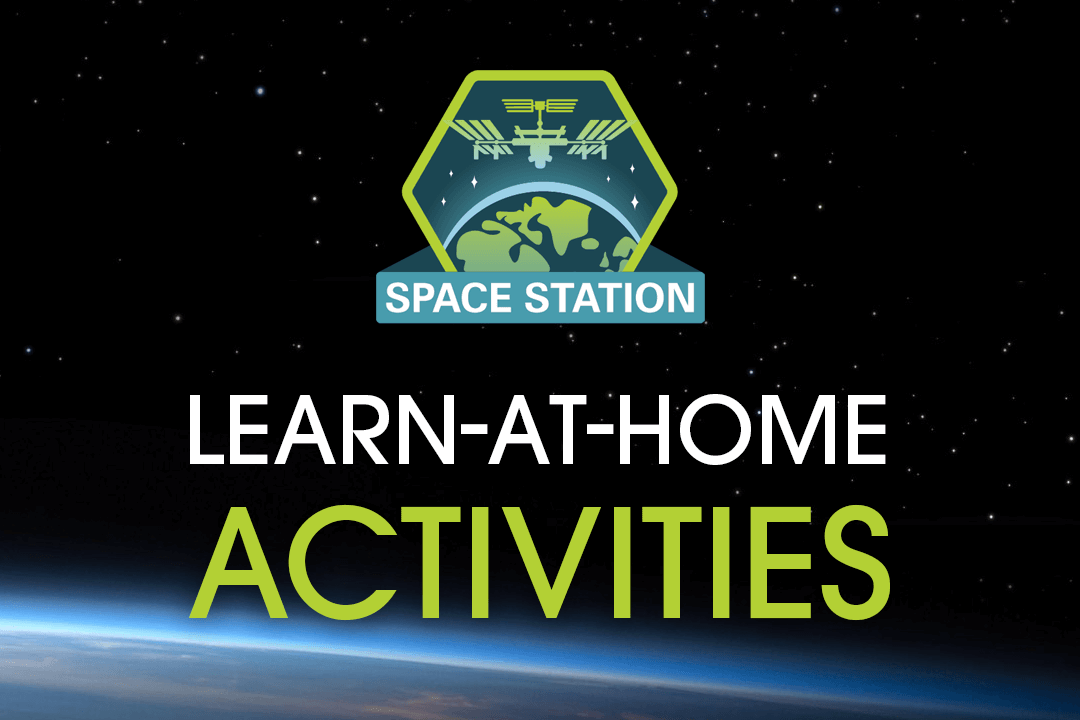An 18-year-old high school graduate has developed an elegant new way to gauge the liver health of astronauts—and it could someday help solve an enduring medical mystery in space.
Each year, the Genes in Space program, founded by Boeing and miniPCR bio and supported by the International Space Station (ISS) U.S. National Laboratory and New England Biolabs, holds an annual student research competition in which students in grades 7 through 12 propose DNA experiments that leverage the unique environment of the ISS.
“Currently there are just so many unknowns about how life responds to the conditions of space, and we’ll need to solve those mysteries before we can establish a long-term presence in space,” said Genes in Space program lead Katy Martin. “The idea behind the competition is to open the door and invite students to lead the investigations that get us those answers.”
Kristoff Misquitta was a high school senior when his idea for a new way to track liver function in astronauts won the national 2020 Genes in Space competition. The concept, launching on Northrop Grumman’s 16th Commercial Resupply Services (CRS) mission, will be validated on the ISS and could eventually be used to improve the effectiveness of vital medications during spaceflight.
Misquitta’s winning proposal began with a mystery: why don’t medications seem to work as well in space as they do on Earth? It is a well-documented phenomenon without a clear explanation—across 79 spaceflight missions, about one in five doses of medication were perceived as not effective.
“When I was doing my research, I was really surprised by a lot of the anecdotes about medicine being taken where it wouldn’t work or that the symptoms persisted in a space environment,” said Misquitta, now in his first year at the Massachusetts Institute of Technology (MIT).
He guessed that the reason could be differences in the function of astronauts’ liver enzymes in space. Spaceflight has been shown to alter the genetic expression of enzymes and other proteins. If these alterations cause changes in the production of liver enzymes, which help the body break down medications, it could mean medicines are processed too slowly or too quickly to be as effective as they are on Earth, Misquitta reasoned.
Working with his high school biology teacher, and later his mentors at MIT and Harvard University, Misquitta devised a way to visualize the level of gene expression from liver enzymes in space. The method pairs a miniature polymerase chain reaction (PCR) machine developed by miniPCR bio with a new fluorescence viewer tool developed by miniPCR bio and Genes in Space, which allows ISS crew members to visualize fluorescent biomolecules on station. The mini-PCR machine amplifies specifically targeted genes, which are then visualized with the viewer, providing an elegant metric: the greater the level of gene expression, the brighter the tubes will glow in the viewer.
If it works, Misquitta’s method could prove a simple and cost-effective method to visually gauge the liver health of astronauts, opening the door for further investigations and the development of rapid diagnostic techniques in space. If differences in liver gene expression can reliably be detected, it also could one day help solve the mystery of why some medications are less effective during spaceflight, paving the way for improvements in drug treatments for astronauts.
“Looking at the potential results of this study, I hope the study can reach a much broader scientific audience that can use it as a springboard,” Misquitta said. “And hopefully, in the future, it can change the way astronauts take medicine on long-duration missions.”
Northrop Grumman CRS-16 will launch from NASA’s Wallops Flight Facility in Virginia no earlier than August 10, 2021, at 5:56 p.m. EDT. To learn more about how the ISS National Lab is supporting research on Northrop Grumman CRS-16, please visit our mission overview page.
Media Contact:
Patrick O’Neill
904-806-0035
[email protected]
# # #
About the International Space Station (ISS) U.S. National Laboratory: The International Space Station (ISS) is a one-of-a-kind laboratory that enables research and technology development not possible on Earth. As a public service enterprise, the ISS National Lab allows researchers to leverage this multiuser facility to improve life on Earth, mature space-based business models, advance science literacy in the future workforce, and expand a sustainable and scalable market in low Earth orbit. Through this orbiting national laboratory, research resources on the ISS are available to support non-NASA science, technology and education initiatives from U.S. government agencies, academic institutions, and the private sector. The Center for the Advancement of Science in Space (CASIS) manages the ISS National Lab, under Cooperative Agreement with NASA, facilitating access to its permanent microgravity research environment, a powerful vantage point in low Earth orbit, and the extreme and varied conditions of space. To learn more about the ISS National Lab, visit www.ISSNationalLab.org.
# # #





